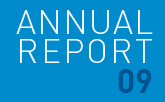The Third Gas Directive, Directive 2009/73/EC, of 13 July 2009, concerning common rules for the internal market in natural gas and repealing Directive 2003/55/EC) is made up of 55 articles, the first of which defines the content and scope of application: This Directive establishes common rules for the transmission, distribution, supply and storage of natural gas. It lays down the rules relating to the organisation and functioning of the natural gas sector, access to the market, the criteria and procedures applicable to the granting of authorisations for transmission, distribution, supply and storage of natural gas and the operation of systems.
One novel feature of this directive is that it introduces new possibilities of functional separation for the administration of transmission facilities. Alongside effective unbundling, ISO and ITO models are also introduced. Under the ISO (Independent System Operator) model ownership of network assets remains with the original company, while technical and commercial operation of these assets is handled by an independent operator. Under the ITO (Independent Transmission Operator) model, the network assets remain with the original company. Regulations, equipment, personnel and different identities must be provided for each of the departments responsible for network administration. A supervisory body guaranteeing the independence of this Operator must be created. The Directive lays down the obligations on operators of LNG and Underground Storage facilities.
The Directive establishes wide-ranging competencies for national regulators, including setting tolls and fees, and consumer protection measures, including the right to switching within a maximum of 3 weeks, with billing coming to an end a maximum of 6 weeks after switching. The Member State will be required within 3 years to perform a feasibility study for the introduction of intelligent metering and on the basis of the results of this draw up the corresponding implementation plan.
The purpose of the Regulation on conditions of access to natural gas transmission networks is:
- Establish non-discriminatory regulations for conditions of access to natural gas transportation networks.
- Establish non-discriminatory regulations for conditions of access to LNG facilities and storage facilities and
- Facilitate the creation of a wholesale market offering effective operation and transparency, with a high level of security in gas supply and
- Establish mechanisms for the harmonisation of regulations for access to the system for cross-border trade.
The Regulation includes LNG facilities and Underground Storage sites. One of the key new features is the creation of ENTSOG (European Network of Transmission System Operators – Gas). This association of European transmission operators will serve as the partnership body to promote implementation of the internal market and cross-border trade. One of the main functions is the drafting of system codes on the initiative of the Commission under the guidelines and control of the European Regulators Agency, the functions being defined in the corresponding Regulation of the third legislative package.
Alongside the 3rd Gas Directive, another of the regulations published in the Official Journal of the European Union of 14 September 2009 was Regulation (EC) 713/2009, establishing an Agency for the Cooperation of Energy Regulators.
The purpose of this Agency will be to assist the (national gas and electricity) regulatory authorities in exercising at the Community level the regulatory tasks performed within the Member States, and if necessary to coordinate their actions.
The tasks entrusted to it include involvement in the development of system codes, supervision of their application, oversight of progress in the execution of projects to create new interconnection capacity, execution of Community-wide network development plans and supervision of the regional co-operation of transmission network operators.
In accordance with the proposals made by the Commission in its Second Strategic Energy Review (November 2008) and their approval by the Energy Council, the European Parliament has drawn up new standards to underpin security of supply in the internal gas market. The Commission is drawing up a proposed regulation on security of gas supply which will repeal Directive 2004/67/EEC currently in force..
The Gas Coordination Group is one of the tools established by the Commission (in 2006) which was more active in 2009. Its purpose is to compile highly up-to-date information (supply, consumption, storage, capacity, etc.) and to maintain a working group (with representatives of EU countries, European gas organisations, consumers) in permanent contact and with the ability to present proposals before the Commission. At one of its most recent meeting the Group indicated the need to coordinate each country's emergency plans, endowing them with a European vision.
The European Union has continued to foster the construction of underground storage facilities and natural gas pipelines. For example, the Nabucco project, the gas pipeline between Slovakia-Hungary, Bulgaria-Greece, the pipelines between France and Spain, flows between Eastern and Western Europe, the Slovakia-Poland gas pipeline, Hungary-Croatia, Bulgaria-Romania and the Galsi gas pipeline (Algeria-Sardinia-Italian mainland), along with a degree of storage facilities, have access to funds amounting to a total value of 1.44 billion euros.




